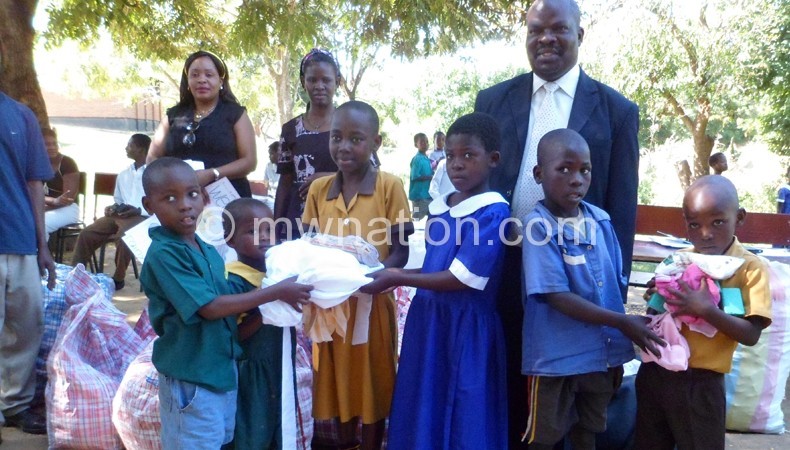Can inclusive education work in primary schools?
Access to education for children with disabilities in the country continues to be a challenge.
According to Malonje Phiri, Mchinji District coordinator for Federation of Disability Organisations in Malawi (Fedoma), the problem is compounded by two factors.

“We have few specialised schools for the disabled in the country; as a result, access is limited. Another reason is that children with disabilities fail to learn effectively in ordinary primary schools, leading to high levels of dropouts,” he says.
There is an argument, however, that Malawi should bank its hope on specialised schools. Beyond the challenge that they are few, experts argue against disabled children going to specialised schools, saying such schools promote segregation.
That is why special needs education (SNE) experts are currently advocating inclusive education.
According to a 2013 Unesco report, inclusive education is an approach that looks into how to transform education systems in order to respond to the needs of a diversity of learners.
“It means enhancing the quality of education by improving the effectiveness of teachers, promoting learning-centred methodologies, developing appropriate textbooks and learning materials and ensuring that schools are safe and healthy for all children,” reads the report.
Over the years, there have been many examples of successful international practice in developing inclusive education systems.
For instance, the Unesco 2010 Global Monitoring Report details that in South Africa, the focus has shifted from special schools to inclusive education in mainstream schools. Research in Eastern Cape, one of South Africa’s poorest provinces, found that inclusive education produced significant gains, ranging from improved physical access to support for specialised teaching practices and increased admission of learners with disabilities.
Malawi, too, has not been left out of the inclusive education loop. In 2012, Parliament passed Disability Bill into law—a legal framework which emphasises the need for building an inclusive society. On the policy level, Malawi has a National Policy for SNE which underlines the need for inclusive education in all levels of education.
Beyond that, the Ministry of Education, Science and Technology now has a director of SNE, who is visually impaired.
This, arguably, underlines some critical steps taken to make inclusive education a success. However, putting inclusive education to practice in primary schools so that children with disabilities learn alongside those without is not an easy thing given the learning environment in Malawi.
For instance, Orlean Chipendo, a teacher at Kavuzi Primary School in Nkhata Bay, says most teachers at her school do not know how to manage a child with disabilities.
“I teach a class of over 100 pupils. Besides the fact that I don’t have any expertise in teaching a child with disability, how do I concentrate on a child with a disability in such a huge class?” she says.
This begs the question: Can inclusive education really work in Malawi?
Ernest Kalindawalo, a teacher at Lirangwe Primary School, says it is possible to teach both learners with and without disabilities in the same class under the supervision of one teacher.
However, he underlines that this could be possible if the teachers were equipped with additional knowledge and skills on how to teach and manage learners with diverse learning needs.
Phiri, on the other hand, says inclusive education can work effectively in school communities that have already restructured to meet the needs of their increasingly diverse pupil populations in mainstream education settings.
“Initiatives and organisational best practices to accomplish this programme include school community teaming, building block arrangement, multi-age student grouping and looping, school wide positive behaviour support and discipline approaches and school-within-a-school family configurations of learners and teachers.
“School children with disabilities have to be treated as members in the school areas than being viewed as strangers and visitors. There must be a great relationship between children with disabilities and non-disabled pupils. These initiatives facilitate the inclusion and development of students with disabilities within general education,” Phiri says.
In 2008, Montfort College of Special Needs Education carried a baseline study in the Shire Highlands Education Division to gauge the experiences of inclusive education in selected schools.
Learners with disabilities, in the study, were asked whether or not they enjoy learning together with peers without disabilities. In all the four zones where the study was conducted, the learners said that they enjoy learning together with those without disabilities. Learners without disabilities were asked again and, in the study, they indicated that they recognise the presence of learners with disabilities in the classrooms. They mentioned that they enjoy learning together with peers with disabilities and support them in various activities.
Principal education officer in the Ministry of Education, responsible for SNE Mathews Kumpale says government is working hard to ensure inclusive education bears fruit.
“We have introduced SNE in teacher training programmes. We are currently providing short courses to teachers that graduated without the SNE component. So far, we have been to 10 districts and trained almost 1 000 teachers,” he says.
He further adds that they have scaled up the intake of SNE teachers to Montfort College.
“We are not just providing diplomas in SNE; we have also increased the intake from 100 to 200. Our goal is to graduate 500 SNE teachers every year,” he says.





